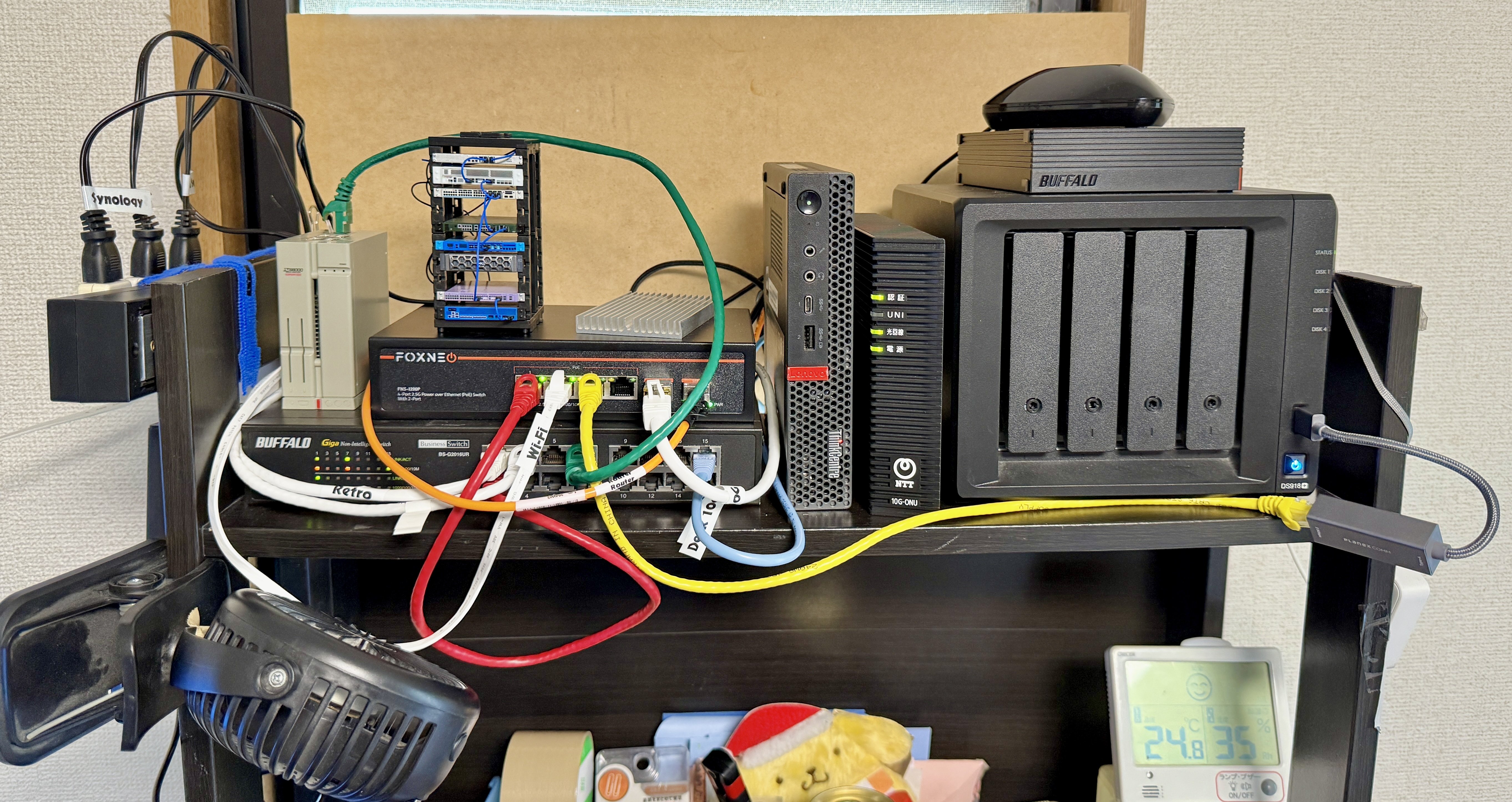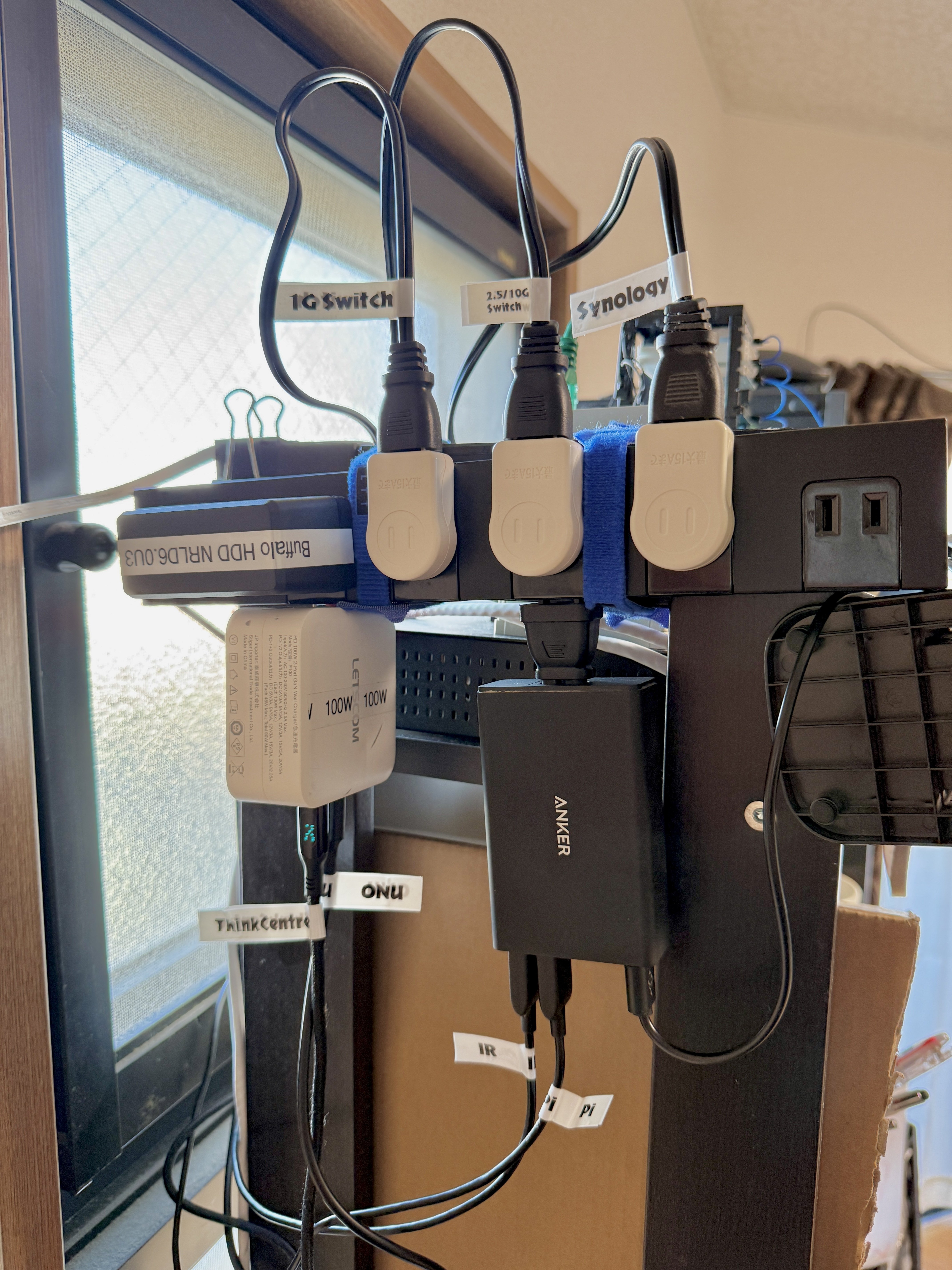

Precisely, the rear ethernet is 1 Gbit, the USB adapter is 2.5 Gbit!


Precisely, the rear ethernet is 1 Gbit, the USB adapter is 2.5 Gbit!


I just got 10 Gbit internet last week so I had a chance to tidy everything up. The ThinkCentre is the 10 Gbit router, the Synology actually hosts everything.

Also finally labeled all the mystery cables. Also replaced the proprietary 20V/12V bricks for the ThinkCentre and 10G Fiber ONU with USB-C adapter cables to keep things tidier.



Solar and wind are just too cheap to build, they are going to take over no matter what anyone does. And in areas with fossil fuels still in heavy usage, short-term putting all the money into building solar makes complete sense - every new solar panel means that much less fossil fuel burned. We still have lots and lots of low-hanging fruit.
With renewables will come battery storage to handle the unpredictability, on the short term, battery projects are going to be super profitable so there will be lots of them. But those profitable battery projects will only handle the easy problems - grid stabilization and a typical overnight cycle. It will leave the grid vulnerable to that freak 2-week long cold snap every 6 years (that may be more common as the climate goes insane and unpredictable)
I’m a big fan of nuclear, but at the current cost difference to solar and wind, it doesn’t have a chance. The role I see for nuclear is to reduce the amount of battery storage needed. If the cost to build nuclear with newer, smaller, more cookie-cutter reactors can come down to replace the cost of batteries long term (as they have to be cycled out after a decade or two) then it will slot in really nicely.

Why do these people have so much confidence that this is supposed to work? Are there people in the group lying that it actually worked for them?


Here are some results if anyone comes across this thread in the future.
The baseline result I need to achieve is a speedtest result of 7.5 Gbit that the ISP’s rental router gives me.
I ended up picking up:
Initially I installed pfSense. I ran iperf3 to just get an initial sanity check that the PCIe card/wiring was working right but was getting results between 3-7 Gbit with the CPU pegging at 50%. Some quick googling returned results like “you can’t run iperf on pfSense!” and “pfSense isn’t a router, why do people keep using it as a router, it’s a firewall!”, so I decided to switch to OpenWRT since the Linux side of things always seems to make more sense.
On OpenWRT, iperf easily hit 9 Gbit with like the CPU at 95% idle.
It took like 2 hours to configure the weird IPIP6 tunnel my ISP uses for IPv4, but once it was set up, the machine has no trouble routing the same 7.5 Gbit speedtest the ISP router managed, with the CPU usage at 78% idle (the remainder in “sirq”)
Power consumption:


If you check the forums, Apple Engineers say that background tasks typically only run overnight https://forums.developer.apple.com/forums/thread/654424
People syncing their photos to the cloud expect them to sync pretty much instantly if the battery isn’t low (which iCloud will do)


Yeah my friend left his MacBook Pro at airport security and when he was reunited 3 weeks later it still had like 50% charge with him tracking it using Find My the whole time


I can only look at Mikrotik gear in jealousy since they don’t have a reseller here, so all that’s available are overpriced, un-warrantied gray imports…


Very interesting, thanks for the links


The low power consumption is one of the reasons I was attracted to the ThinkCenter M720q devices. It definitely wouldn’t be worth it if I had to build some tower PC or run a Xeon server!
The ISP router I’m getting is 10 Gbit (on WAN and one LAN port, the rest are 1 Gbit), but the configuration seems limited and it’s a $5/mo rental tacked onto the bill.
I think I can live without IDS/IPS, in all the time I used it on UniFi, it never gave me any actionable info, so hopefully that helps me with performance.
That’s interesting about the 10Gbit ethernet cards. Is that with something like a Mellanox or some other card? My NAS is going to be stuck on 2.5 Gbit since it’s just a Synology.


Thanks for the Intel x520 recommendation, those are looking like a much better deal right now than the Mellanox cards I was looking at.
Glad to hear it about the BSD networking!
I’m still trying to avoid the Xeons for power consumption reasons, hehe, although it would be a lot more fun for sure!


Yeah I’m not ordering anything until I have the connection up and running, which is why I opted to rent the ISP router to begin with, but looking at results online that others on the same ISP have posted, I can probably expect up to around 7 Gbit real-world so I’ve been thinking that I will at least want something better than the standard 1 Gbit or even 2.5 Gbit stuff out there, hence why I’m trying to research what the hardware requirements actually are!


These ThinkCenter M720q machines I’m looking at all seem to have a single PCIe 3.0 8x card slot, regardless of the CPU, and that seems to be all that the Mellanox ConnectX cards need according to their spec sheets, so hopefully that is good.


We also need to consider the practical aspects. Who mucks after the horses? Who feeds them? Do we need a stall? Does it need to be air conditioned in the summer/winter?


The problem is that it all looks really $$$, even on the used market


Microsoft try not to copy everything Apple does challenge: Impossible
At least “Apple Intelligence” is cute because the initials for it are A.I.


They should have built a solution where the phones that haven’t been tested get cut off, but get an SMS telling them to activate the phone, call SOS once. For the first SOS call, they intercept it, check that the phone was able to make the call, then unblock the phone, and after that, allow SOS calls as normal.
That would require “actually doing work” though.
It’s from a japanese Gacha machine! https://bitbang.social/@kalleboo/112755170852099746